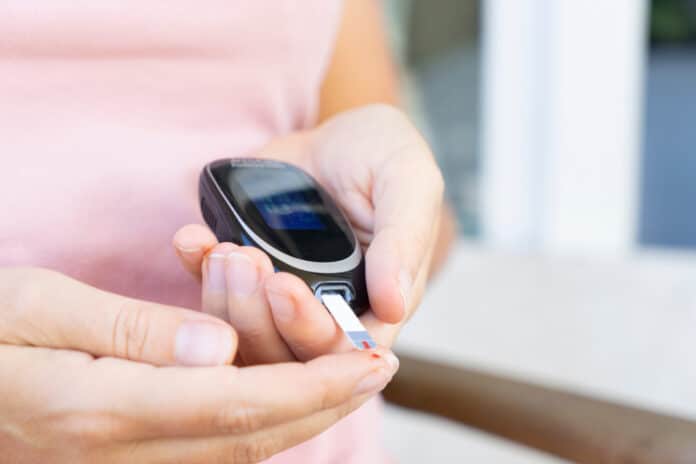
If you receive a prediabetes diagnosis, it usually means you have abnormally high blood sugar levels, yet not quite high enough to be defined as diabetes just yet. It’s at this stage when lifestyle and diet changes can be most beneficial to avoid developing type 2 diabetes.
Want to learn more about what prediabetes is, and how to handle this diagnosis? Keep reading.
Symptoms of Prediabetes
Some people will have no symptoms of prediabetes, and only discover this after a routine blood test. However, others will show clear warning signals. These might not always be correlated to prediabetes right away, though.
Some common symptoms of prediabetes include:
- The development of acanthosis nigricans, a skin condition identified by dark, thick, and velvety patches of skin. Typically, these dark patches appear on the elbows, armpits, knuckles, and neck. This condition is common in those with insulin resistance associated with PCOS.
- Increased thirst.
- Increase urination, particularly at night.
- Blurry vision.
- Sores or cuts that will not heal.
- Unexplained weight loss.
- Fatigue.
If you are experiencing any of the above symptoms, it’s good to consult a doctor and get a test for diabetes. It’s also important to get routine blood tests, in case you don’t have any symptoms.
Risk Factors for Prediabetes
Certain risk factors make someone more likely to experience prediabetes and type 2 diabetes in their lives.
These risk factors include:
- Age – those 45 and older are most likely to develop prediabetes.
- Body weight – if your BMI is over 25, you may be at a higher risk for prediabetes.
- Race and/or ethnicity – data shows that those of African American, Hispanic, Asian American, and Native American descent are more likely to develop prediabetes.
- Family history – if you have a close relative with type 2 diabetes, your risk for developing diabetes increases.
- Waist size – a larger waist is associated with a higher risk for prediabetes.
- Diet – those who eat processed food and snacks, lots of red meat, and sugars are at a higher risk for prediabetes.
- Health history – those with conditions like PCOS, sleep apnea, gestational diabetes, and high blood pressure have a higher risk of developing prediabetes.
Dealing With a Prediabetes Diagnosis
Knowing you have prediabetes allows you to make impactful lifestyle changes before it develops into diabetes.
Although there is no way to ensure you will not eventually get diabetes, research shows that implementing lifestyle changes can delay the evolution from prediabetes to diabetes for at least 10 years.
In addition, losing weight is shown to have a big impact on decreasing the risk of diabetes. Losing only 5-7% of your body weight can drastically reduce your risk of developing diabetes if you are already considered to be overweight.
Making immediate changes to your diet and lifestyle after a prediabetes diagnosis is the best course of action to delay and sometimes entirely prevent developing diabetes down the line.
Some examples of lifestyle changes to prevent diabetes include:
- Eat fresher, fiber-rich foods, including legumes, fresh fruit, leafy vegetables, and whole grains.
- Limit or entirely cut out your consumption of sweetened beverages, such as soda or sugary juices.
- Aim to get 30 minutes of physical exercise each day.
- If you smoke, find resources to help you quit.
- Manage your stress levels with yoga, therapy, meditation, or other methods that work for you.
Conclusion
Prediabetes is a signal that diabetes is likely to develop down the line. Getting a prediabetes diagnosis can be concerning, but it is good because it gives you time to reduce your risk of developing true diabetes. Making intentional lifestyle changes to stave off the development of diabetes has shown to be effective in many cases.
Sources:
Prediabetes: What You Need To Know (thediabetescouncil.com)
Prediabetes – Symptoms and causes – Mayo Clinic
Prediabetes: Causes, Symptoms, Diagnosis and Treatment – Betahealthy


















